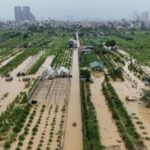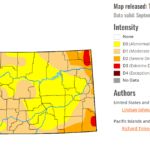BOZEMAN — Artificial intelligence seems to be everywhere these days, from social media apps to the laboratories of Montana State University. Now, thanks in part to a doctoral student in MSU’s Gianforte School of Computing, it’s in the state’s agriculture fields helping farmers take the guesswork out of maximizing crop yields.
To a layperson, one field of winter wheat might look just like the one adjacent to it. How-ever, Giorgio Morales, an MSU Ph.D. student from Peru, has the data to show that soil conditions and other variables can change significantly not just from field to field, but also in the span of just 10 meters. Morales is leveraging artificial intelligence to crunch thousands of data points to help farmers maximize their crop yields and profits while potentially lowering the amounts of fertilizers they use.
Morales is developing AI methods to determine how combinations and quantities of variables such as soil nutrients, nitrates, humidity and precipitation influence a particular outcome – in this case, crop yield. It’s part of a practice in farming called precision agriculture, in which novel technologies are integrated into production systems.
People are also reading…
“We can collect data from the soil, and also we can use aerial images and satellite images to monitor the fields. All of that data can be combined to understand the behavior of the of the fields themselves,” said Morales, who is expected to graduate from MSU with a Ph.D. in computer science in 2025. “We can use that information to predict what’s going to happen during the harvest.”
Armed with this highly detailed information, farmers can adjust the amount of seed, water or fertilizer they need to apply in specific places to maximize their profit and minimize the guesswork.





